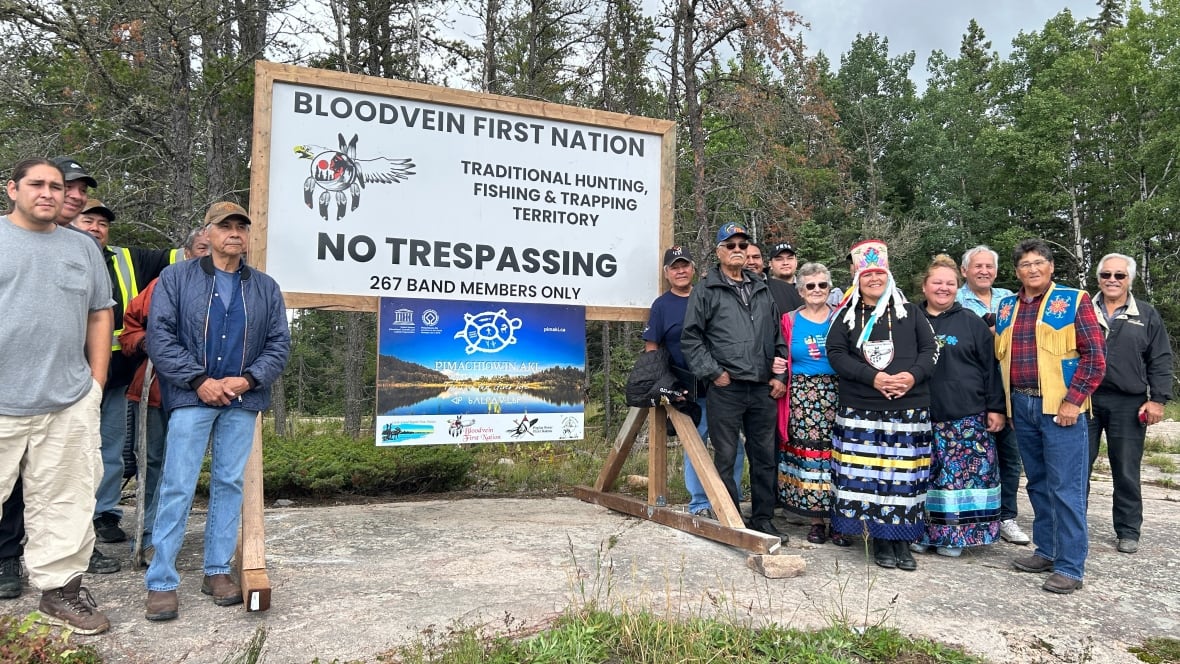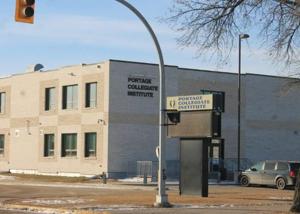Top Stories
Bloodvein First Nation Bans Non-Indigenous Hunters Amid Crisis

UPDATE: Bloodvein First Nation has just announced an immediate ban on non-Indigenous hunters on their land, a decisive move aimed at combating severe moose overhunting that has devastated local populations. This urgent decision comes in response to years of alleged hunting abuses, leaving the First Nation’s traditional hunters struggling to find moose.
Located over 200 kilometers north of Winnipeg, Bloodvein First Nation erected no-trespassing signs on Saturday, signaling a crackdown on outsiders. Chief Lisa Young confirmed that non-Indigenous hunters, even those with valid licenses, will be turned away at community checkpoints. “We’d like to stop people from driving into our First Nation and taking over this area and hunting off of our river,” Young stated.
The community, which has only seen one successful moose hunt last year, is calling on the Manitoba government to halt the issuance of hunting licenses in Bloodvein territory. Chief Young expressed deep concern over the ongoing depletion of moose, crucial for sustaining the community of 1,300 residents. “We sustain ourselves with our hunting and fishing in our area, and we’ve had some unsuccessful hunts over the years because of the overhunting in our area,” she added.
Recent reports indicate that the province plans to issue 350 moose-hunting licenses for the upcoming season, more than triple the number from 2024. This increase has intensified the pressure on Bloodvein’s moose population, as non-Indigenous hunters are increasingly venturing into the First Nation’s territory due to closures in other areas. Elder William Young noted, “Of course the hunters are going to come to our area because the other areas are closed.”
The situation has reached a critical point, with disturbing reports of waste and poor hunting practices. Elder William Young highlighted how he has witnessed “irregular hunting practices,” including helicopters scouting for moose and meat left to rot along the Bloodvein River. “Nothing is wasted,” he emphasized, underscoring the community’s traditional practices of utilizing every part of the animal.
In a broader context, the First Nation’s decision is supported by various regional leaders, including Minister of Natural Resources and Indigenous Futures Ian Bushie, who has been in contact with Bloodvein officials. The Assembly of Manitoba Chiefs and the Assembly of First Nations have also expressed solidarity with Bloodvein’s stance.
As the moose hunting season approaches, which runs from September 15 to October 12, the urgency for sustainable practices becomes increasingly critical. Chief Young hopes the no-trespassing rules will compel the province to reconsider its hunting licensing policies in the area. “We’re just standing by our rights,” she affirmed.
Local hunters, like former Chief Frank Young, view the ban as a necessary step toward restoring moose populations. “It’s good now that it’s going to be closed,” he said, stressing the importance of protecting their resources for future generations.
This developing story highlights the urgent need for sustainable hunting practices and respect for Indigenous rights to land and resources. The Bloodvein First Nation’s decisive action may set a precedent for how Indigenous communities manage their traditional territories amid growing external pressures.
Stay tuned for further updates as this situation unfolds.
-

 Politics4 weeks ago
Politics4 weeks agoSecwepemc First Nation Seeks Aboriginal Title Over Kamloops Area
-

 World5 months ago
World5 months agoScientists Unearth Ancient Antarctic Ice to Unlock Climate Secrets
-

 Entertainment5 months ago
Entertainment5 months agoTrump and McCormick to Announce $70 Billion Energy Investments
-

 Science5 months ago
Science5 months agoFour Astronauts Return to Earth After International Space Station Mission
-

 Lifestyle5 months ago
Lifestyle5 months agoTransLink Launches Food Truck Program to Boost Revenue in Vancouver
-

 Technology3 months ago
Technology3 months agoApple Notes Enhances Functionality with Markdown Support in macOS 26
-

 Lifestyle3 months ago
Lifestyle3 months agoManitoba’s Burger Champion Shines Again Amid Dining Innovations
-

 Top Stories2 months ago
Top Stories2 months agoUrgent Update: Fatal Crash on Highway 99 Claims Life of Pitt Meadows Man
-

 Politics4 months ago
Politics4 months agoUkrainian Tennis Star Elina Svitolina Faces Death Threats Online
-

 Sports5 months ago
Sports5 months agoSearch Underway for Missing Hunter Amid Hokkaido Bear Emergency
-

 Politics5 months ago
Politics5 months agoCarney Engages First Nations Leaders at Development Law Summit
-

 Technology5 months ago
Technology5 months agoFrosthaven Launches Early Access on July 31, 2025



















